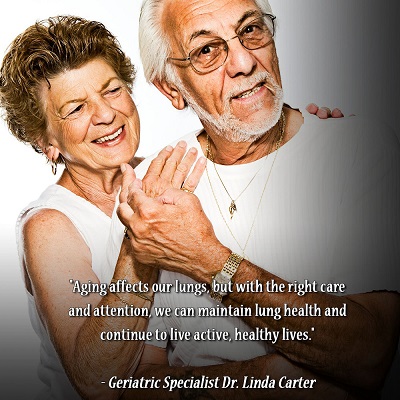 As we age our lungs change, just like other parts of our body do. Our bodies go through natural changes over time, and our lungs are no exception. It’s an unfortunate but normal part of getting older. While it’s normal that our lungs change, we can still do things to keep our lungs healthy as we age.
As we age our lungs change, just like other parts of our body do. Our bodies go through natural changes over time, and our lungs are no exception. It’s an unfortunate but normal part of getting older. While it’s normal that our lungs change, we can still do things to keep our lungs healthy as we age.
To do that, it helps to understand the age-related changes in lung function, as well as the common respiratory conditions that seniors may face.
Age-Related Changes in Lung Function
Did you know our lungs are normally at their peak in our 20s? Once we hit 35, they start to slow down a bit. It’s completely normal. That’s why senior-aged people especially might notice feeling short of breath or having a little more trouble breathing.
Understanding the changes in our lungs can help us take better care of our lung health as we age.
Here are some of those changes:
Less Elasticity
Our lung tissues lose elasticity over time and the air sacs become baggy and lose their shape. Sounds like other parts of the body, doesn’t it? These changes make it harder to take deep breaths and expel air.
Weaker Muscles
The muscles that help us breathe, like the diaphragm, become weaker as we age. This reduces our ability to inhale and exhale forcefully, so it may also lower the oxygen levels in your body, and less carbon dioxide may be being removed. With weaker muscles, our airways may lose their ability to open completely. This is what can cause a restricted airflow.
Stiff Chest Wall
The bones and muscles around the chest stiffen with age. This limits lung expansion because the shape of the ribcage changes. Bones become thinner, so the ribcage may not expand and contract fully while you breathe.
Aging Nervous System
Our brain also changes as we age, and the part that controls breathing may lose some of its function. The nerves in our airways may also become less sensitive, so instead of coughing out particles and germs, they may accumulate in the lungs.
Weaker Immune System
Aging can also weaken our immune system, making it harder for our bodies to fight off lung infections and other diseases. A weaker immune system also reduces our ability to recover fast from exposure to harmful air and chemicals.
Common Respiratory Conditions in Seniors
The age-related changes to our body can make our lungs more vulnerable to infections and diseases. Here are some of the common ones:
Chronic Obstructive Pulmonary Disease (COPD)
COPD is a common disease among adults, characterized by a blocked airflow, causing difficulty breathing and persistent respiratory symptoms.
Pneumonia
Aging causes us to be more prone to infections, and pneumonia is one of the common bacterial infections. It inflames the air sacs in one or both lungs, which can become filled with fluid. This leads to chest pain and other symptoms, all of which need to be attended to.
Maintaining Lung Health in Later Life
Simple practices like staying active with regular exercise, avoiding smoking, and keeping your home environment free of pollutants can be a great start. Make sure you eat a balanced diet rich in antioxidants and please, please, please stay hydrated.
You can also practice deep breathing exercises as they can help maintain your lung capacity. They’re easy and fun to do so there really is no excuse not to start doing these today.
By taking these steps now, you can help your lungs stay strong and healthy for a lot longer than if you do nothing.
Understanding the changes that occur in our lungs as we age and being aware of the common respiratory conditions that may develop when we age is important for maintaining good lung health.
Whatever your age, it’s never too late to take the steps you need so that you can keep your lungs as healthy as possible in your senior years.
By doing the things mentioned above, such as staying active, eating well, practicing good breathing techniques, and also making sure you get regular check-ups, you can keep your lungs stronger for longer. Your longevity is counting on you having a good pair of healthy lungs!






